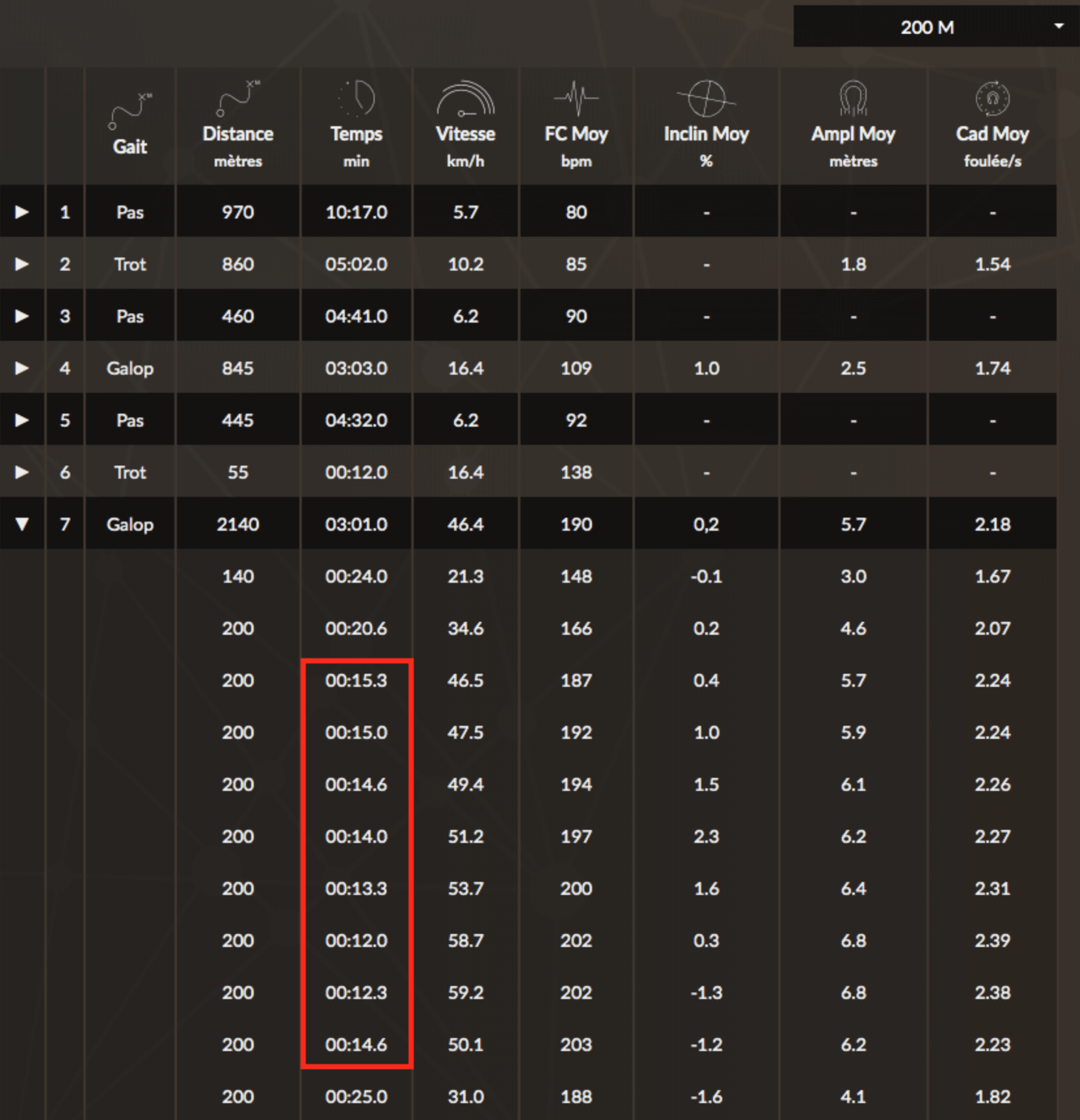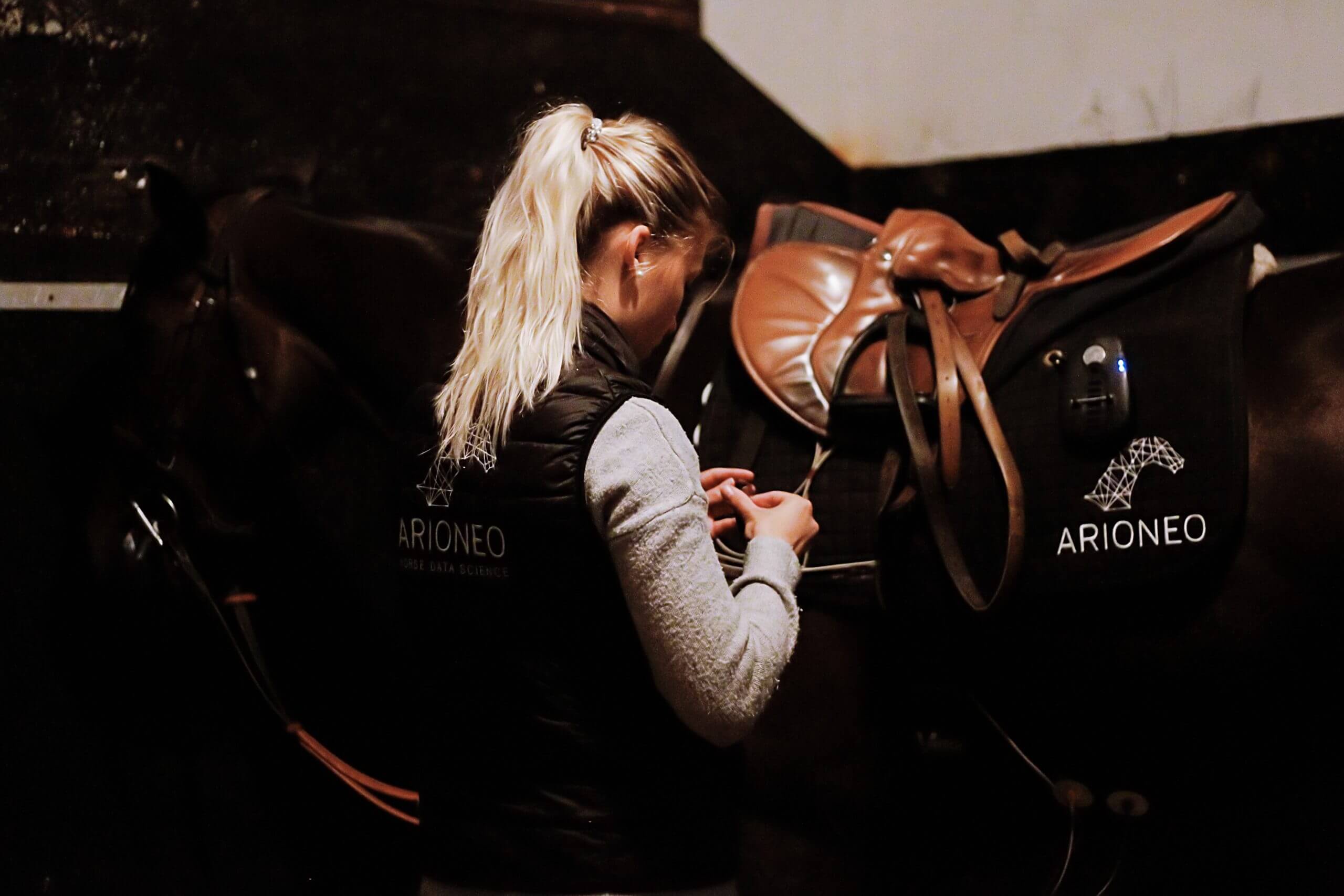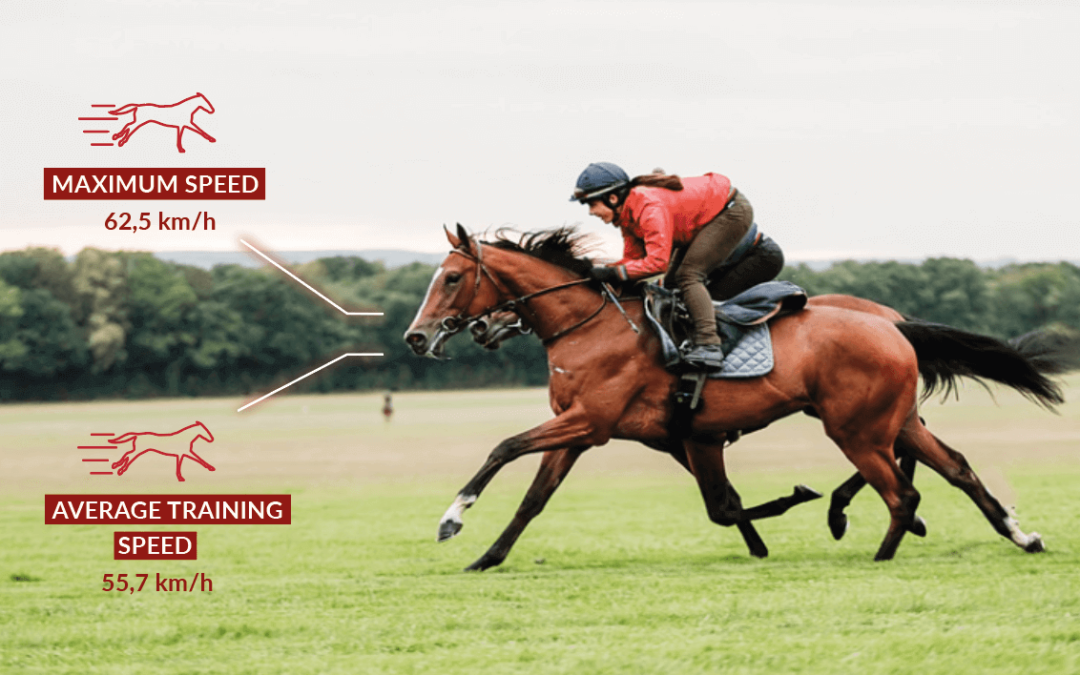Monitoring speed during training is necessary and indispensable. It allows you to ensure that your instructions are being followed. Thus, it is possible to get an idea of the workload you have put on your horse. This understanding of how the horse takes on training allows the individual work of each horse to be adapted. Once the horse is ready to race, the split time analysis allows you to make informed decisions about race choices. Thanks to the race simulator, you can make sure that your horse will be within the target race time.
What are the benefits of tracking speed in training?
Respect of the instructions by the rider
On the one hand, with live GPS tracking, you can follow the speed of your horses live during training, and not only when the horses pass in front of you. With the live speed of all the horses, you can also intervene in the middle of the training if you have communication systems with your riders. In this way you can be assured that all horses are being trained according to his instructions.
In addition, you have at your disposal a posteriori training replay tool that allows you to analyse how the speed has evolved at specific points during training, thanks to a map and a scroll bar. You can then play again the trainings, horse by horse, enriched with cardio and locomotor data.
Response of the horse to the effort required
Depending on the work, the conditions of the ground, the different fitness of each horse, the same work will not be taken up in the same way by all the horses. Therefore, during speed training it is important to analyse the parameters of heart rates and recovery. The analysis of the recovery is carried out in two stages, first the rapid recovery after the effort, then the recovery at 15 minutes.
A horse in good shape will show a good “elasticity” in the variation of its heart rate. Indeed, the heart will be able to climb up quickly when the effort required is intense and to slow down just as quickly when the effort required is less intense. Depending on the quality of the recovery, you can have a precise idea of the difficulty of the day’s work for the horse. Thus, you will be able to anticipate possible over or undertraining, to understand that a certain exercise is not assimilated for a certain horse or, on the contrary, that a certain training was easy for another.
Individualise the work
By analysing the response to the effort required, you can make the horse progress faster by identifying points for improvement more effectively. From then on, a custom training for each horse becomes possible. Analysing the impact of the different parameters which influence the speed of each horse is a matter of incorporating a variety in the nature and intensity of the effort required into the analysis. By varying the work, it will be possible to isolate the parameters preferred by the horses or, on the contrary, those representing the greatest difficulty for them.
- The horses could alternate between long-distance canters, and high-speed gallops on the grass.
- You can also vary the types of tracks. Working on deep tracks force the horse to use his muscles and thus develop them as well as his respiratory capacities. Then by linking this work with faster tracks such as the fiber-sand tracks, the horse can loosen up and experience higher speeds, which will also have the benefit of having a positive influence on its morale.
- Varying the work also depends on the hand the horse is being worked on. It will be wise to analyse for example the best 600m done on a right-handed track and on a left-handed track, with the same effort demanded. In this way, you will have objective and precise data at his disposal to make his choice of enrolment.
- It is useful from time to time, in agreement with the veterinary surgeon and taking all precautions to preserve the integrity of the horse, to experiment with top speeds in training, similar to racing speeds. These punctual maximum speed training sessions will allow the analysis of intermediate times in comparison with those observable during a race. This can also be useful in assessing the maximum heart rate for each horse. However, these maximum speed training sessions should be conducted with care to avoid any risk of injury.
Analysis of training split times
The analysis of split times in the race, compared with the analysis of split times in training, is therefore a main tool for decision support in race entries. Thus, the trainer will be able to know whether a particular horse is ready for a particular race. By comparing race data with his training data, he will be able to decide more easily which race to enter, and which horse to enter in which race.
Example – Application to a race

Data from the EQUIMETRE platform
Let’s take a concrete example. The two-year-old horse Arion (anonymised, as well as all the data in the document), entered in St Cloud in a 2000m race with conditions (for 2 years never having won), whose intermediate times are shown on the left, was entered. The weather was rather bad on the day of the selected training (7.7 degrees under an overcast sky with light rain), so the ground was rather heavy.
On average, on the racecourse of St Cloud, in races with conditions of 2000m, on a ground from sticky to Very Heavy (predictable according to the weather), races are run in 146.21 seconds, with average intervals of 200m run in 14.2s. This calculation was carried out using a sample of 20 races meeting all these conditions, based on data found on PMU.com.
We can thus see that Arion, which was at his fastest at 12.0 and 12.3, and on average at 13.8 (average in the red square above), was therefore ready to run and win this race. The horse won the race by several dozen lengths.
Conclusion
Many parameters influence race speeds. Among them play the ground, the shoeing, the topography, the hand, the track design, the level of the race or the weight carried. Other parameters still play a role on the speed of the racehorse, the talent of the jockey, how the horse sleeps, his morale, the transport, the food, the weather for example, and the speed of a horse will never be an exact science.
However, tools such as Equimetre are good ways to understand how each of these parameters influences the speed of each horse and how training can be individualised in order to deploy the full potential of the horses. Coupled with the use and exploitation of quality databases such as the one used by Arioneo’s race time simulator, you hold the keys to make informed enrolment choices by cross-referencing race speed data with training speed data.

Keywords: training, speed, analysis, intermediate times, individual work, effort



